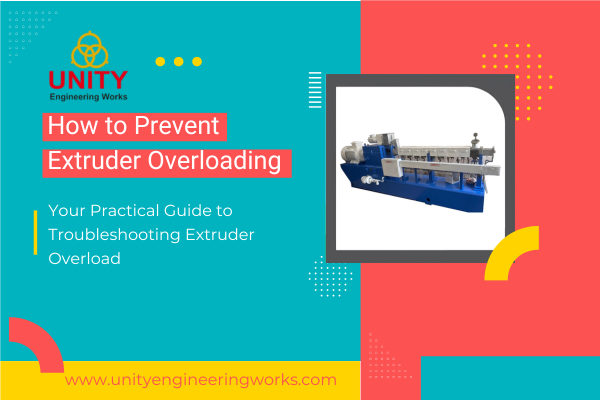Introduction: When Extruder Surging Becomes a Production Bottleneck
Extruder surging is one of those frustrating problems that silently eats into your production efficiency. For one of our PVC clients, this issue wasn’t just a nuisance — it was costing them time, material, and output consistency. The company reported fluctuating melt pressure, irregular strand formation, and frequent amperage drops on their twin-screw extruder.
Let’s dive into how our technical team identified the root cause and implemented practical corrective measures that restored stable extrusion performance.
The Problem — Fluctuating Melt Pressure & Inconsistent Output
The client’s PVC pipe extrusion line was operating a 65mm twin-screw extruder. Over several weeks, they noticed irregular extrudate flow and pressure surges at the die head. The symptoms included:
Frequent pressure oscillations between 90–120 bar.
Irregular motor amp readings (variation ±15%).
Uneven pipe surface finish and occasional voids.
Minor temperature inconsistencies in the metering zone.
Initial suspicion pointed toward material variation, but the root causes were deeper in the process parameters.
Root Cause Analysis — Where the Real Problem Was Found
A detailed inspection revealed multiple contributing factors:
Feed Variability: The volumetric feeder was delivering inconsistent output due to bridging in the hopper.
Screw Wear: The conveying section of the screws had 0.3 mm clearance beyond tolerance, reducing feeding efficiency.
Temperature Instability: The metering and die zones had ±7°C fluctuations, affecting melt homogeneity.
With this information, our engineers prioritized corrective steps to regain process control.
The Fix — Step-by-Step Resolution
- Stabilized Feeding: Installed a stirrer-equipped hopper and recalibrated the feeder for uniform throughput.
- Screw Refurbishment: Worn screw elements were replaced, restoring proper compression and material conveying.
- Temperature Reprogramming: Implemented a tighter PID temperature control loop and recalibrated sensors.
- Real-Time Monitoring: Added pressure and amp trending via the PLC to detect early-stage surging.
After implementing these measures, the line achieved steady melt pressure within ±3 bar, consistent motor load, and smoother product output.
Conclusion: Prevention Through Process Intelligence
Extruder surging may start small, but left unchecked, it can cause serious efficiency losses. By combining regular maintenance, consistent feeding systems, and smart process monitoring, PVC and UPVC plants can prevent such costly disruptions.
If your line faces similar issues, our experts can help you diagnose and stabilize your extrusion system.
→ Contact us today for a free process evaluation.



